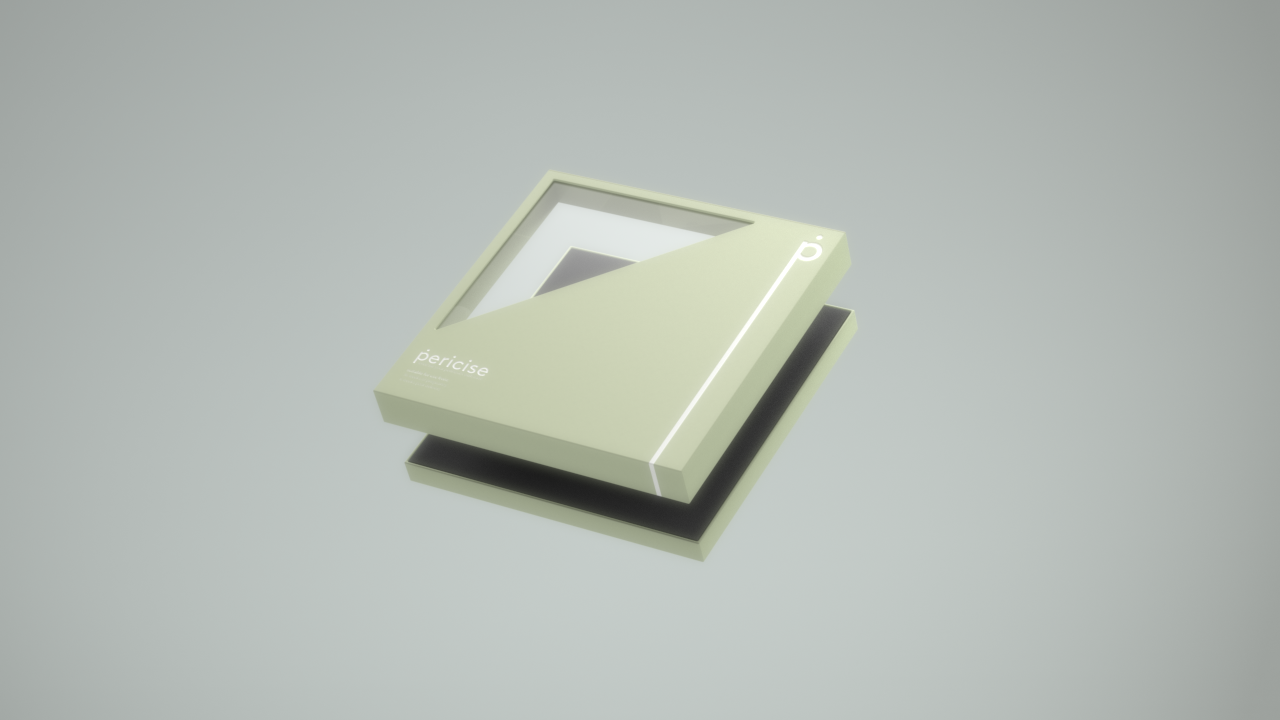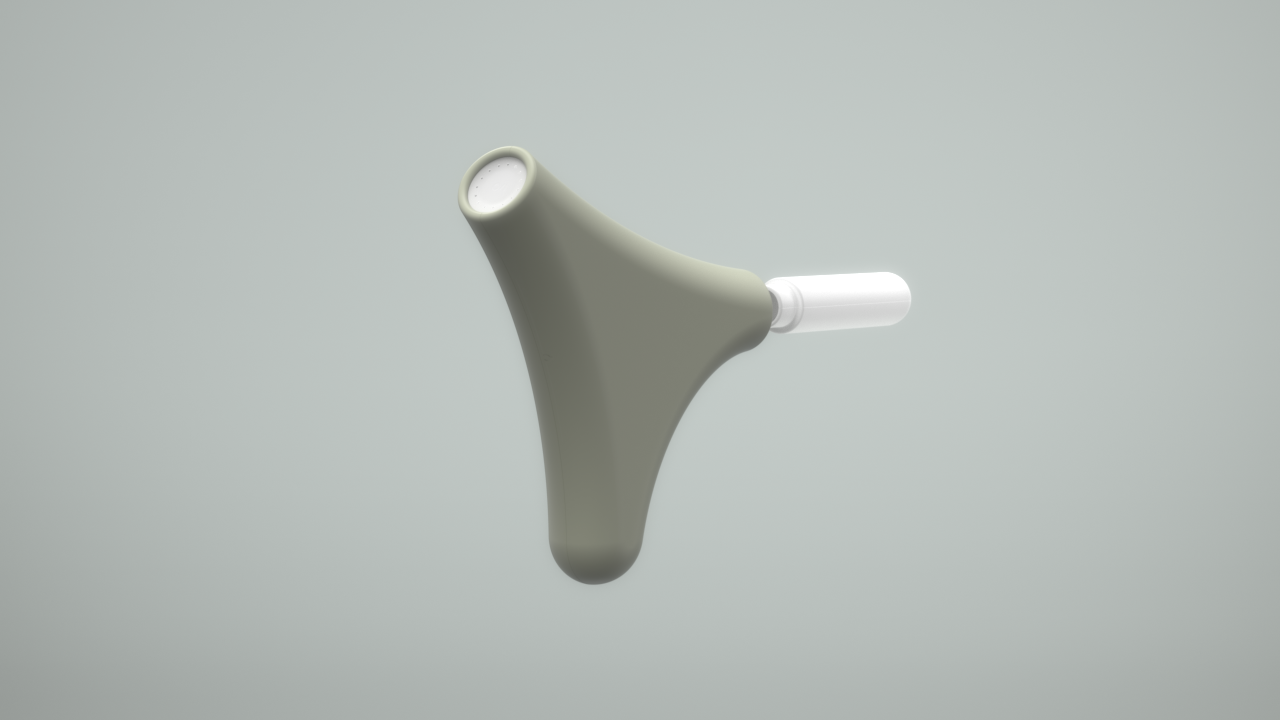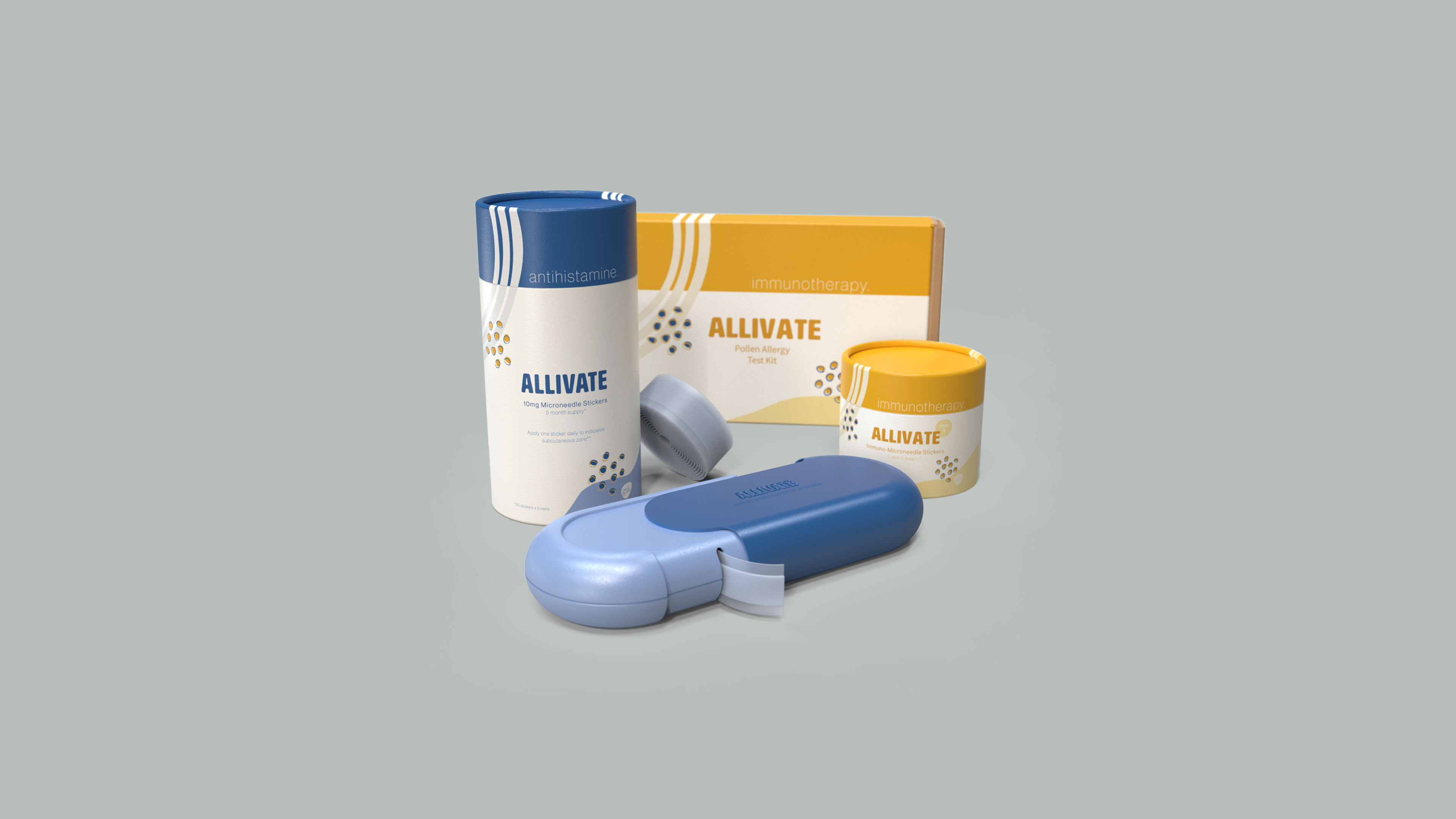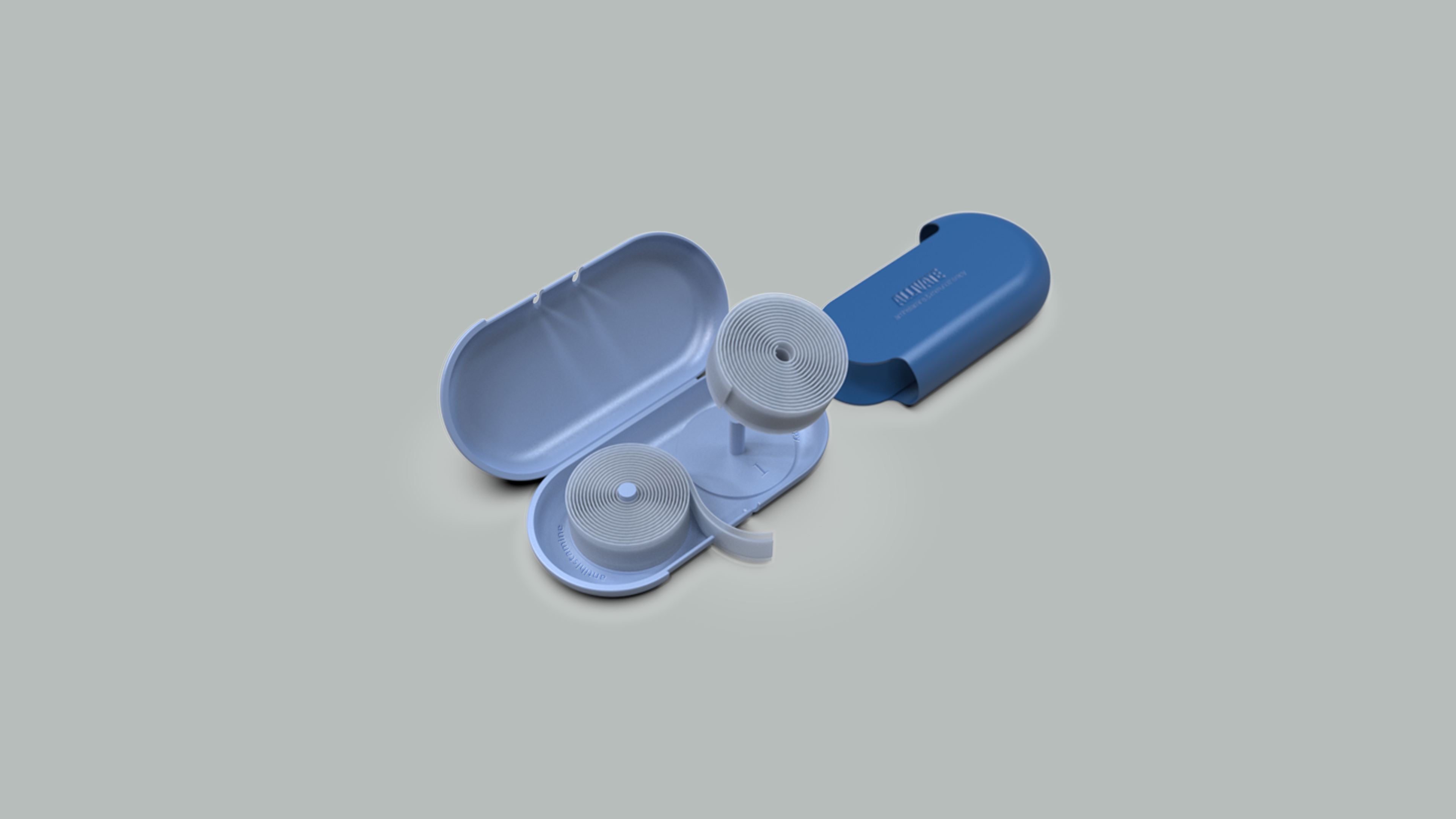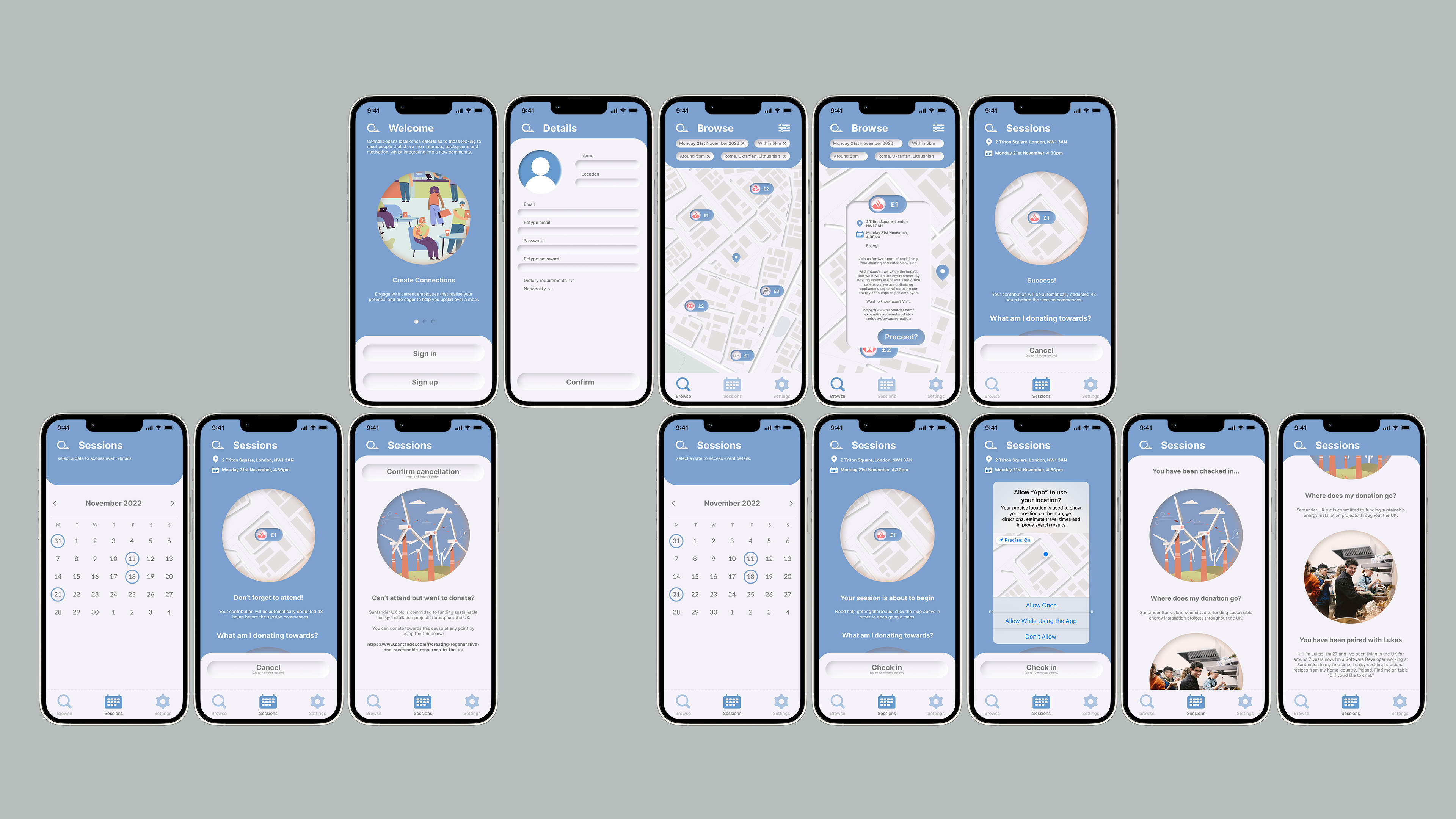I am a driven designer who will rapidly rework ideas until satisfied that all interaction will be smooth, well-considered and justified.
Final year project
Reducing the Likelihood and Effects of Perineal Trauma as a Result of Childbirth
PERICISE
According to Oxford University Hospital, ‘around 9 in 10 women will tear to some extent during childbirth’. Most tears will occur in the perineum, which is the area between the vaginal opening and the back passage. The severity of such injury varies from first to fourth degree. Tearing is a complex issue, and its likelihood can be increased by several factors that are out of the mother’s control.
Expulsive and uncontrolled pushing during the second stage of labour put sudden pressure on the perineum. Although there is an overwhelming urge to push during crowning, by holding back momentarily and allowing the skin to stretch, the perineum is more likely to stay intact. Perineal massage can help to familiarise yourself with this feeling prior to birth.
Research points towards this reducing likelihood of third and fourth-degree tearing, episiotomy and post-natal incontinence, particularly in first-time deliveries. It is recommended that perineal massage is carried out from 35 weeks of pregnancy, 3 to 4 times a week. Each session should last for around five minutes and involves inserting the thumbs partway into the vagina and applying pressure between the three and nine o’clock positions. However, many women find this practice difficult to carry out by themselves due to their large bumps getting in the way. Even if they do attempt the massage, they aren’t confident in their technique.
Perineal tearing can lead to incontinence, difficulty going to the toilet, infection, and painful sex. Although the wound usually heals within four to six weeks postpartum, symptoms can last much longer than this. For example, one study found that almost one in five women with second-degree tears reported perineal pain at six months post-partum.
For some, this is caused by scar tissue buildup. As the skin is damaged, it tends to be thicker, less flexible, and painful to touch. Perineal massage can help to alleviate this problem as it encourages the breakdown of collagen fibres, reducing unnecessary adhesions. Experimenting with texture can also help to desensitise the area.
I designed Pericise to assist with both pre-and post-natal perineal massage. Key features are as follows.
PERICISE - Attachment Control
As the device cannot be seen whilst in use, I used tactile markers to help identify controls with ease. The speed button cuts into the silicone body and is patterned with raised stripes. The contrast in texture between the two surfaces should be obvious by touch alone. The subconscious association of stripes and speed should help to reassure the user further that they are pressing the correct button. The button is pressed once for speed one, twice for speed two and thrice for speed three. A piezo confirms the change in setting through vibration.
The device has been designed for both right- and left-handed use. A tilt switch determines the orientation of the device so that when the speed button is pressed, the massaging attachment knows which direction it should rotate. Controls are located centrally as this area is easily accessed no matter which way the device is held.
PERICISE - Branding
I brainstormed words that I associated with my project to create the brand name Pericise. Perineum + Precise + Exercise = Pericise.
I wanted the packaging to feel medical yet approachable, reassuring the user that the product is safe and accurate when in use.
PERICISE - Preheat
When the device is switched on, it begins to preheat. The LEDs illuminate one by one in a clockwise direction until the circle is complete - this indicates that the device is ready for use. Massage oil should then be spread across the tip of the device to reduce friction with the perineum. Before insertion, the area should be warmed to encourage the dilation of blood vessels, improving tissue flexibility and stretch.
Pericise - Prenatal vs Postnatal Use
During pre-natal use, the device may need to be extended to manoeuvre around the bump. The handle provided can be attached to the main body by pushing through the opening in its side and twisting it into position.
During post-natal use, the user should be able to reach their perineum more easily, allowing them to use the device in its standard form. Scar tissue can be very sensitive to touch, and if at any point the user finds the device overwhelming, they can quickly switch it off by squeezing its underside sharply.
ALLIVATE - Introduction
65% of people in the UK use blister packs at least once a week. 77% of these people don’t know if they can be recycled, and 29% admit to putting them in their household recycling bin, contaminating their rubbish.
The NHS estimates that a minimum of 20% of people suffer from hay fever. Assuming that medication is used daily for five months a year, that’s 280 million antihistamine blister packs sent to landfills annually. In the last twenty-eight years, the hay fever season has extended by twenty days due to of global warming, meaning that medication has needed to be taken more and more frequently. We can only expect this trend to continue until we take this issue more seriously.
Allivate is a bespoke, 5-year course of immunotherapy and antihistamine treatment, delivered transdermally through bio-dissolvable microneedles. Each dose is embedded onto an adhesive Notpla strip that dissolves in warm water. Consistent use eventually eradicates the symptoms of hay fever, meaning medication is no longer needed and waste is reduced by 98%.
ALLIVATE - How Does It Work?
The user picks up their ‘starter kit’ from a local store. This contains five reels of antihistamine microneedle patches, a reusable dispenser and an allergy testing kit.
The user can determine their personal triggers by applying a large microneedle patch, infused with small doses of common allergens, onto their skin. Results are analysed by the Allivate app via photo recognition and used to create bespoke immunotherapy microneedle patches. After processing, two reels of immunotherapy microneedle patches are disturbed to a local Pharmacy for collection.
For one day each week, two microneedle patches will be worn by the user – one to alleviate symptoms and the other to gradually expose the user to increased doses of identified triggers.
Treatment will last for five years and afterwards, the body should be able to tolerate previous allergens, eradicating the need for medication completely.
CONNEKT - Reducing Domestic Energy Consumption
As the COVID-19 pandemic spread across the UK and social distancing laws were put into place, most employees were forced to work online, leaving office spaces and facilities underutilised. Since then, many companies have not looked back, encouraging flexible working hours and environments.
Connekt provides people who have recently migrated to the UK with opportunities to create new connections through meal-sharing opportunities. Hosted in office cafeterias, company volunteers prepare food in bulk quantities, maximising appliance usage. All parties eat together, giving guests the chance to network and meet people of similar backgrounds to themselves. A small donation is required to attend the event, but all proceeds are put towards sustainable energy initiatives.
Amy Phillips
Final year project
Reducing the Likelihood and Effects of Perineal Trauma as a Result of Childbirth
Awards
RSA Student Design Awards Shortlisted - May 2022
As a group, we created an alternative solution to blister packaging that was significantly less environmentally damaging.
Diploma of Professional Studies - July 2021
Python and Java Programming Foundation - June 2021
I learned the basics of the Python and Java programming languages by participating in two weeks worth of intensive sessions.
AAT Foundation Certificate in Accounting, Level 2 - May 2021
Certified SolidWorks Professional Exam (High Pass) - June 2020
Weekly CAD sessions improved my ability to create and modify designs efficiently in SolidWorks.
Worldstar Award Challenge Semi-Finalist - November 2019
Tasked to redesign the World Packaging Organisation Trophy, my entry advanced to the semi-final judged in Indonesia.
Starpack Students Silver Award - July 2019
Logoplaste awarded my multi-functional plastic liquid container with a 'Silver Prize'.
Work Experience
Designer in Residence at Wrekin College - September 2020 - July 2021
My projects focused on key areas of design and/or academics, as listed below:
I designed and manufactured, for the Summer Exhibition, a piece of furniture that reflected contemporary living needs. The final product was designed for those working from home as a result of the Coronavirus Pandemic. It had a dual function, allowing it to be used as a TV cabinet or a desk depending on the time of day. This project allowed me to build on my workshop skills, widening my knowledge of machinery and its safe use.
I selected and recommended 3D modelling and printing software for the School to use. I created a step-by-step document that explained how physical models could be produced and 3D printed using Fusion 360 and Cura. This piece was used by technicians in the department in order to gain a basic understanding of CAD. I also regularly answered students' software queries on a one-to-one basis.
I worked closely with academically more able girls to stretch and challenge them in their studies. I tried to make them more aware of the future careers and pathways available to them in Design, whilst inspiring them to see beyond what is often a gender imbalance in Schools.
I taught Photoshop to a group of 3rd form students, twice a week, as part of an emotive design project.
I taught a year-long project to a group of 2nd form students, guiding them throughout the whole design process. Their brief was to design and manufacture an item suitable for sale in a charity shop. This involved helping them to understand their user group, giving feedback on sketch ideas and producing a batch of their final concept. Regular interaction with this class allowed me to develop my communication skills and confidence when presenting to a group.


